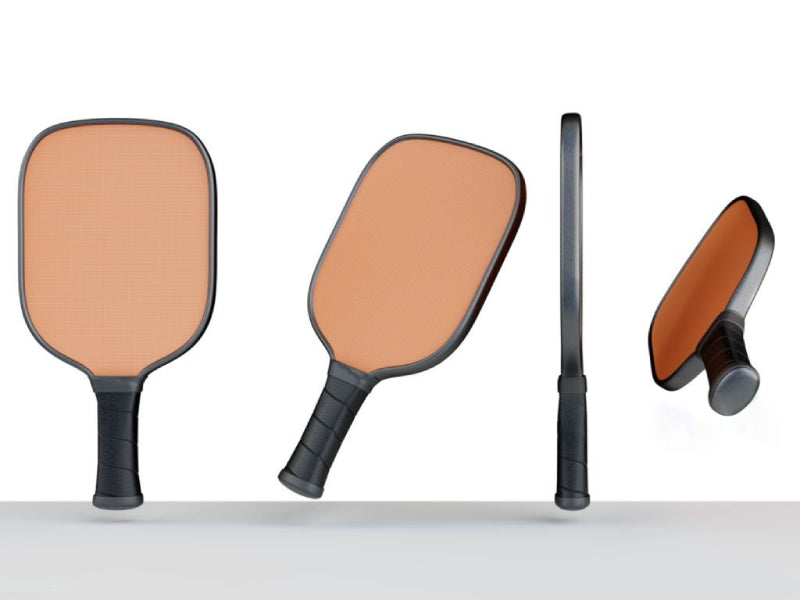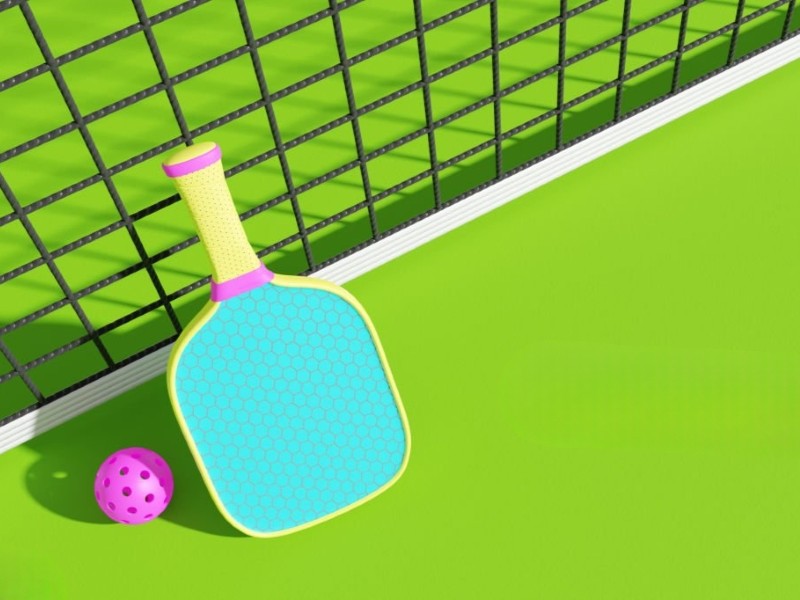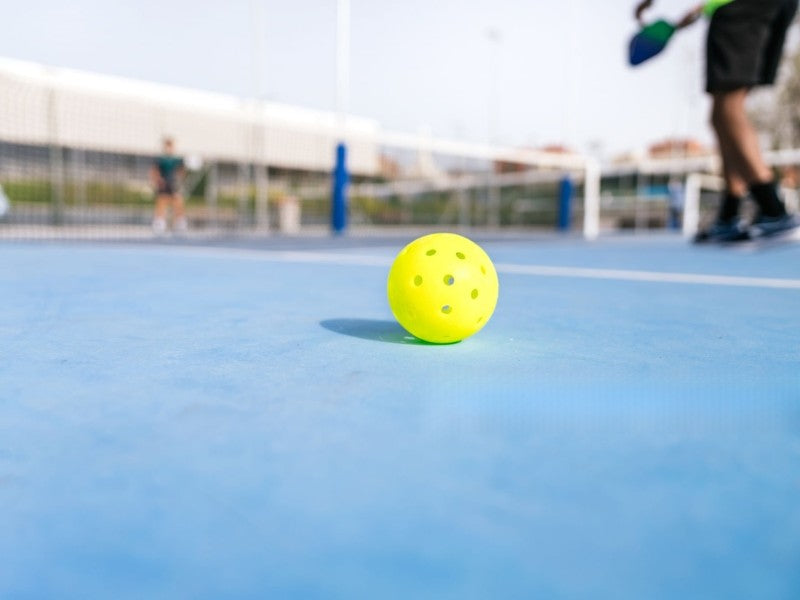Pickleball is one of the fastest-growing sports in the world, and as more players enter the courts, the demand for better equipment continues to rise. While paddles come in many different materials, weights, and grip styles, one factor often overlooked by beginners and even intermediate players is pickleball paddle size.
Why Paddle Size Matters
Why does size matter? Because paddle length and width directly affect how you play—your reach at the net, your ability to control dinks and volleys, the amount of power you generate from baseline drives, and even how comfortable you feel during long matches. A paddle that is too large may feel heavy or clumsy, while one that is too small may limit your coverage and reduce forgiveness on off-center hits.
Paddle Dimensions & Official Rules: What “Size” Actually Means
When players talk about pickleball paddle size, they usually mean the paddle’s physical dimensions: length and width. But there’s more to it. Let’s break down the details.
Length and Width
- Length: Most paddles range from 15.5 to 17 inches. Longer paddles provide more reach and leverage, while shorter ones allow quicker reactions.
- Width: Typically falls between 7 and 8.5 inches. A wider paddle creates a larger sweet spot and more forgiveness, but it may sacrifice maneuverability.
Surface Area
Length and width together determine the total hitting surface area. A paddle with a larger surface area tends to be more forgiving, but it might feel less responsive compared to a smaller, more compact paddle.
Paddle Shape
- Standard: Balanced between width and length, designed for all-around play.
- Elongated (longer): Prioritizes reach and power but narrows the sweet spot.
- Wide-body: Emphasizes forgiveness and control, great for defensive play and beginners.
Official Rule Limits
According to USA Pickleball regulations:
- The combined length and width (including edge guard and butt cap) must not exceed 24 inches.
- The maximum paddle length is 17 inches.
- There are no restrictions on thickness, but most paddles are between 11–16 mm.
This means manufacturers have flexibility to design paddles that feel very different while still staying tournament-legal. Players therefore need to understand which dimensions work best for their playing style.
Typical Market Ranges (Table Example)
|
Paddle Type |
Length (inches) |
Width (inches) |
Best For |
|
Standard |
15.5 – 16.5 |
7.5 – 8.25 |
Balanced play (all skill levels) |
|
Elongated |
16.5 – 17 |
7 – 7.5 |
Singles, extra reach, baseline power |
|
Wide-body |
15.5 – 16 |
8.25 – 8.5 |
Beginners, doubles, forgiving sweet spot |

How Paddle Size Impacts Performance: Power, Control, Reach & Sweet Spot
Now that we’ve defined what pickleball paddle size means, the next step is understanding how it affects your actual performance on the court. This is where small changes in dimensions can translate into noticeable differences in gameplay.
Power vs. Control
- Longer paddles (16.5–17 inches): The added leverage gives more power on drives and smashes. However, the smaller width reduces forgiveness, making mishits more likely.
- Shorter paddles (15.5–16 inches): Provide better control and maneuverability. They’re great for quick volleys, dinks, and defensive play at the kitchen line.
In doubles play, where reaction speed matters, many players prefer slightly shorter paddles. In singles, where covering the full court is critical, longer paddles often give an advantage.
Reach & Court Coverage
A paddle just half an inch longer may not sound like much, but in pickleball—a game of fine margins—that extra reach can decide whether you return a deep lob or miss it by inches. Taller players often already have natural reach, so they may not benefit as much from elongated paddles compared to shorter players.
Sweet Spot & Forgiveness
- Wider paddles (8+ inches) have larger sweet spots, making them more forgiving for beginners. Off-center hits still travel where you want.
- Narrow paddles (7–7.5 inches) concentrate the sweet spot in the center, rewarding precision but punishing mishits. Advanced players may prefer this for consistency.
Comfort & Injury Prevention
Paddle size also influences comfort and injury risk:
- Larger paddles may distribute shock better, reducing vibration that can cause “pickleball elbow.”
- Oversized paddles can feel heavy at the top, which may strain wrists and shoulders if not balanced with weight and grip size.
Case Examples
- Doubles Kitchen Play: A player using a wide-body paddle can block fast volleys more consistently thanks to the big sweet spot.
- Singles Baseline Rally: A player with an elongated paddle generates extra power and can reach deep shots more easily.
Summary of Trade-Offs
|
Paddle Size Feature |
Advantage |
Potential Drawback |
|
Longer Length |
More reach, more power |
Smaller sweet spot, slower reaction speed |
|
Shorter Length |
Faster maneuverability |
Less reach, less leverage |
|
Wider Face |
Larger sweet spot, forgiving |
Slightly heavier, less precise |
|
Narrow Face |
Better precision, faster swings |
Smaller sweet spot, punishes mishits |
By understanding these trade-offs, you can match your paddle to your strengths while minimizing weaknesses.
Choosing Paddle Size by Player Profile & Style
Not every player needs the same paddle size. The right choice depends on your skill level, playing style, and even your physical condition. Below are common player profiles and the paddle dimensions that tend to work best for each.
Beginners and Recreational Players
For those just starting out, consistency and forgiveness are far more important than raw power. A wide-body paddle (8–8.5 inches) with a standard length (15.5–16.5 inches) offers the largest sweet spot and reduces mishits. This helps beginners focus on developing proper form instead of worrying about precision.
Intermediate Club Players
As players improve, they begin to appreciate paddles that balance power and control. Many in this group prefer standard paddles that are around 16 inches long and 7.8–8 inches wide. These provide reliable performance across all shot types, making them versatile for both doubles and singles.
Advanced & Tournament Players
Competitive players often choose paddles tailored to their style:
- Singles specialists may go for elongated paddles (16.5–17 inches) for extra reach and baseline power.
- Fast-handed doubles players might prefer slightly shorter, wider paddles for lightning-quick net play and reliable dinking.
Net-Dominant Doubles Players
At the kitchen line, where control is everything, a wider paddle with a large sweet spot is advantageous. The extra forgiveness helps in blocking fast volleys and absorbing pace without sending the ball out of bounds.
Baseline Power Hitters
Players who rely on drives and passing shots benefit from elongated paddles. The additional length provides leverage, generating more pace while also extending court coverage.
Juniors and Youth Players
Young players often lack hand strength and wrist stability. Smaller paddles (both shorter in length and narrower in grip) are more manageable, preventing strain and allowing them to develop correct technique.
Senior Players
Comfort is critical for older athletes. Many prefer paddles that are moderately wide with balanced weight distribution. A slightly larger face can offset slower reaction times, while avoiding oversized paddles helps reduce fatigue and injury risk.
How to Measure, Test, and Compare Paddle Size in Real Life
Reading specifications online is one thing, but actually experiencing the paddle in hand makes all the difference. Here’s a step-by-step testing guide you can follow at a store or demo session.
Step 1: Grip and Comfort Check
- Hold the paddle in your natural playing stance.
- Ensure the length doesn’t feel unbalanced.
- Confirm that the handle and paddle face proportions feel natural in your hand.
Step 2: Static Swing Test
- Swing the paddle slowly a few times.
- Notice if the paddle feels “head-heavy” or balanced.
- A longer paddle should still allow you to swing comfortably without strain.
Step 3: On-Court Drill Test (5–10 minutes each)
- Dinks at the kitchen: Test control and forgiveness.
- Volleys: Assess quick reaction ability.
- Third-shot drops: See how consistent the sweet spot feels.
- Baseline drives: Evaluate power and reach.
Step 4: Record Observations
Use a simple scorecard (1–5 scale) across categories:
- Power
- Control
- Reach
- Comfort
- Sweet spot size
- Vibration feedback
Step 5: Compare Results
If possible, test at least two or three paddles of different sizes. Sometimes the difference is subtle but significant once you play longer rallies.
Pro Tip: Always test with the same type of ball and under similar court conditions. Otherwise, you might mistake ball bounce or environment for paddle performance.
Pairing Paddle Size with Weight, Grip, Shape & Maintenance

While pickleball paddle size is crucial, it doesn’t exist in isolation. Paddle weight, grip size, and shape all interact to affect playability.
Size + Weight
- Large paddles often pair best with lighter weights (7.3–7.6 oz) to prevent sluggish swings.
- Smaller paddles can be slightly heavier, giving stability without feeling cumbersome.
Size + Grip
- If you choose a larger paddle face, make sure the grip size matches your hand.
- A grip that is too small or too large increases injury risk. Use the “index finger test”: place your index finger between your palm and fingers when holding the paddle; if it fits snugly, the grip is correct.
Size + Shape
- Elongated paddles may shift the sweet spot upward, changing how the paddle feels.
- Wide-body paddles often sit closer to the hand, which increases forgiveness but reduces leverage.
Maintenance Considerations
- Larger paddles expose more surface to contact with the ground or net posts, making edge guard protection more important.
- Always check for cracks, dents, or delamination—especially in oversized paddles where stress is greater.
- Store paddles in a padded case to prevent warping or edge damage.
Choosing the right pickleball paddle size can dramatically impact your performance and enjoyment of the game. A paddle that fits your style enhances consistency, maximizes power when you need it, and minimizes fatigue or injury risks.
Instead of chasing trends or copying others, focus on your goals: Do you want more control at the net? More reach for singles? Or greater forgiveness for learning the game? Once you answer those questions and test paddles systematically, you’ll be well on your way to finding your perfect fit.









Leave a comment
This site is protected by hCaptcha and the hCaptcha Privacy Policy and Terms of Service apply.